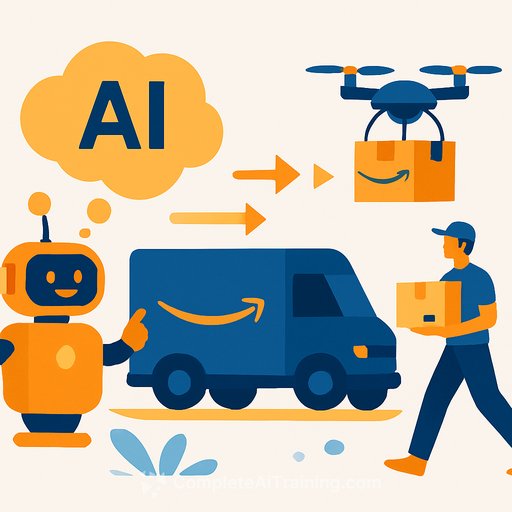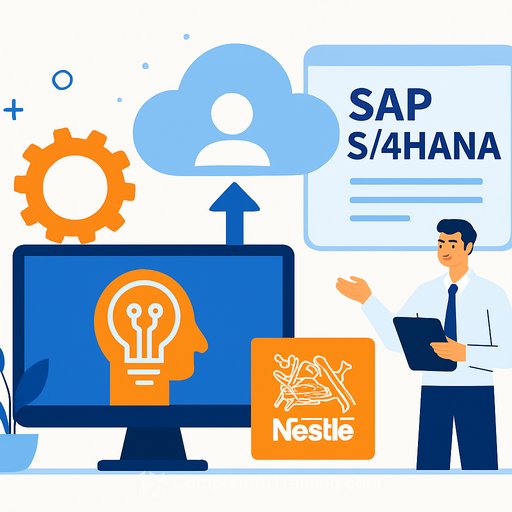How Amazon Uses AI to Speed Up and Improve Package Delivery
Amazon has introduced three new AI innovations that make delivering packages faster and more accurate. These include Wellspring, a generative AI mapping tool; an AI-powered demand forecasting model; and an agentic AI team focused on robotics that understand natural language commands.
With over 750,000 robots sorting, lifting, and carrying packages, Amazon is improving the work environment for employees and speeding up deliveries for customers. These AI-powered systems help ensure packages arrive at the right place, on time, and with less hassle for delivery partners.
Wellspring: Generative AI Mapping to Improve Delivery Accuracy
Wellspring uses generative AI to create detailed maps that improve delivery location accuracy. It processes data from satellite images, road maps, building layouts, customer instructions, and past deliveries to better pinpoint entrances, parking spots, and individual units in apartment complexes or new neighborhoods.
This technology helps delivery drivers find the most convenient drop-off points, such as shared mailrooms or specific building entrances, cutting down on missed or delayed deliveries. Before Wellspring, gathering this level of location detail would have taken years of manual effort.
For example, during testing in the U.S. starting October 2024, Wellspring mapped over 2.8 million apartment addresses to their buildings and identified convenient parking at 4 million addresses. It even analyzes photos and location data from previous deliveries to detect entrances and mailroom spots, helping drivers work confidently in complex environments.
AI-Powered Demand Forecasting for Smarter Inventory Planning
Amazon’s new demand forecasting model predicts what products customers want, where, and when. Unlike older systems that relied mostly on sales history, this AI model factors in time-based data like weather and holidays to plan inventory more precisely.
For instance, it recognizes regional trends such as increased sunscreen sales in Cape Cod during summer or ski goggles in Colorado’s ski season. This leads to a 10% better long-term forecast accuracy for major deal events and a 20% improvement in regional forecasts for popular items.
The result? Faster deliveries, fewer miles driven by delivery partners, less traffic, and lower carbon emissions. This model is already in use across fulfillment centers in the U.S., Canada, Mexico, and Brazil, with plans to expand further.
Agentic AI Brings Natural Language Understanding to Robotics
Amazon Robotics is developing agentic AI to allow robots to understand and act on natural language commands. Operators will be able to give instructions like, “Pick all items in the yellow tote to your left,” or “Load the trailer with all totes in the loading area,” using everyday language.
This builds on Vision Language Models (VLM) and robotic action policies, transforming robots from simple machines to helpful assistants that can safely handle heavy loads in tight spaces. This frees employees to focus on tasks requiring judgment and problem-solving.
One example is Proteus, an autonomous mobile robot that moves customer orders efficiently. Another is Vulcan, Amazon’s first robot equipped with a sense of touch, which improves safety and speed by handling repetitive tasks that would otherwise require human effort.
Practical Benefits for Operations Professionals
- Improved delivery accuracy: Wellspring reduces errors in package drop-offs, saving time and fuel.
- Optimized inventory: AI forecasting helps place the right stock in the right warehouses ahead of demand spikes.
- Enhanced robotics collaboration: Natural language commands simplify human-robot interaction, improving efficiency.
- Safer workplaces: Robots handle repetitive or heavy tasks, reducing strain on employees.
These AI advancements are practical tools that support operations teams in meeting customer expectations while improving day-to-day workflows. For professionals interested in learning more about how AI can improve operational efficiency, resources such as Complete AI Training’s courses for operations roles offer valuable guidance.
Your membership also unlocks:





